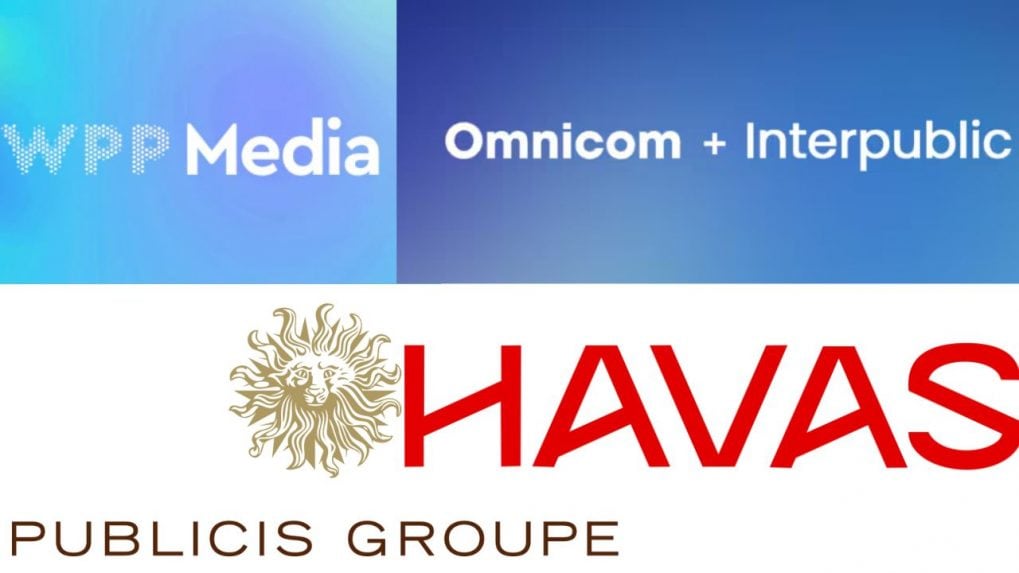End of the Old Guard? Publicis outperforms, WPP declines, Havas rises, Omnicom readies IPG merger
As WPP reels from revenue declines and vows sweeping restructuring, Publicis and Havas ride strong AI-led client demand. With Omnicom and IPG on the cusp of a historic merger, the global advertising landscape braces for a power realignment built on data, technology, and efficiency.
ADVERTISEMENT
The world’s biggest advertising holding companies painted sharply contrasting pictures in their Q3 2025 results, reflecting an industry in flux: where artificial intelligence, integrated offerings, and operational efficiency increasingly determine who wins and who wobbles.
Publicis Groupe emerged as the clear standout, delivering 5.7% organic growth and upgrading its full-year guidance, powered by strong demand for its AI-driven marketing transformation platform and record new business wins.
Meanwhile, WPP stumbled, posting an 8.4% year-on-year revenue decline and warning that FY25 growth will likely remain negative as new CEO Cindy Rose promises deep restructuring to simplify operations and refocus on profitable growth.
Omnicom, buoyed by modest 2.6% organic growth, is moving aggressively to close its $13.5 billion acquisition of Interpublic Group (IPG)- a deal that will create the world’s largest marketing services company. Although IPG expects to file its quarterly report on or before November 10, 2025
Omnicom's acquisition of IPG expected to close in November
And Havas, while smaller in scale, reported 3.8% organic growth and raised its outlook, citing its Converged.AI strategy and double-digit expansion in its healthcare vertical.
The mixed financials reveal a widening gap between legacy networks struggling to recalibrate and those effectively embedding AI and data at the core of their client solutions.
AI: From Buzzword to Business Engine
AI is no longer a promise, it certainly happens to be a revenue driver for holdcos.
At Publicis, CEO Arthur Sadoun declared that “AI is not a future promise- it’s a reality today that’s driving our growth,” as the company deepened its investments in Epsilon’s data stack and AI-native acquisitions like Moov AI and Lotame. Nearly 60% of Publicis’ revenue now comes from “Connected Media,” underpinned by data-driven automation and performance measurement tools.
Havas, too, credited its Converged.AI platform for helping clients operationalize AI across their marketing ecosystems, while its new Horizon Global JV is set to expand its U.S. footprint through AI-led planning and measurement tools.
In contrast, WPP’s AI journey appears to be in transition. The company recently launched WPP Open Pro, its proprietary AI-powered marketing platform, and renewed its five-year partnership with Google to advance AI capabilities. However, Rose conceded that “recent performance is unacceptable” and that “significant restructuring” is needed to simplify operations and drive integration between creative, media, and technology divisions.
Clients Stay Cautious but Committed
While macroeconomic uncertainties and client budget conservatism persist, the top players report no major pullback in ad spend- especially in high-growth verticals like healthcare, retail media, and performance marketing.
WPP saw 6.7% growth in healthcare, even as consumer packaged goods (CPG), auto, and retail sectors dragged results down. Publicis, meanwhile, noted continued resilience in client demand, with no major budget cuts through Q3 and strong spending in the U.S. and Asia-Pacific markets.
Consolidation or Collision? How ad land’s mergers create crisis of overlapping of leadership roles
Havas’ double-digit growth in healthcare mirrored this trend, reinforcing that health and data-led marketing remain the industry’s most reliable revenue engines.
The Omnicom-IPG Effect: Consolidation with Consequence
The impending Omnicom–IPG merger- expected to close next month will reshape the global advertising landscape, creating a behemoth with combined revenues north of $20 billion. Omnicom CEO John Wren called it a “transformational deal” that will yield “strategic advantages in data, media, creativity, production, and technology.”
However, integration costs are already weighing on Omnicom’s margins, which slipped from 15.5% to 13.1% in Q3 due to acquisition and restructuring expenses. Yet, analysts view the merger as a catalyst for large-scale efficiency gains and a challenge to Publicis’ current dominance.
Ad group Havas lifts full-year outlook, APAC rebounds with 8.2% organic growth
The consolidation also signals an industry-wide shift toward scale and platformization, where networks combine creative and media buying power with data and tech infrastructure to stay competitive against consulting giants like Accenture Song and tech platforms like Google and Meta.
India, China, and the Global Balance
Emerging markets continued to act as stabilizers.
For WPP, India stood out with 6.7% growth, offsetting double-digit declines in China. Publicis and Havas also reported healthy momentum in Asia-Pacific, particularly in China, where share gains in Connected Media offset macro softness.
This geographic divergence underscores the increasing importance of India and Southeast Asia as growth hubs for global holding companies seeking both scale and talent depth.
India among bright spots as Havas posts steady growth in first half of 2025
As 2025 heads toward its close, the advertising industry faces a clear fork in the road. Publicis’ AI-powered resurgence contrasts sharply with WPP’s restructuring struggles and Omnicom’s transitional costs.
The coming quarters will test whether AI-led transformation and consolidation can offset softening client sectors and structural headwinds.

